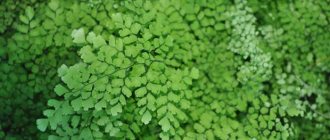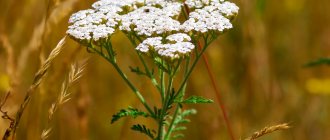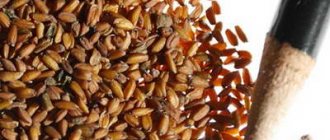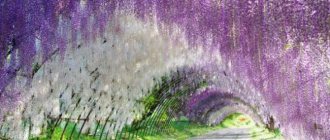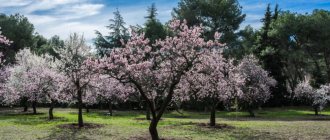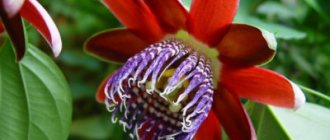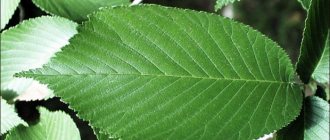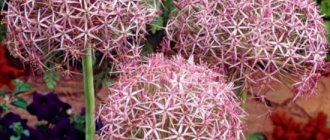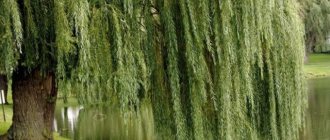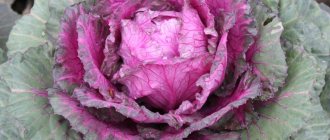Encyclopedia of Plants
Decorative sunflower or as it is also called “sunny flower” (Helianthus) is a bright annual or perennial plant that harmoniously decorates any area. By planting such a flower on your territory, you will be able to add attractive accents to it.
- 1 Features and types of plants
- 2 Secrets of caring for decorative sunflowers 2.1 Sowing rules
- 2.2 Crop pests
Popular varieties
The most popular varieties of oilseed sunflower for growing in Russia and its central zone are:
- The SPK variety is one of the most popular and in demand on the market. Among all varieties and hybrids of sunflower it stands out as the best honey plant. Seeds ripen on average in 90 days. Prefers a spacious area. Before planting SPK seeds, it is recommended to treat them, because the variety is susceptible to various diseases.
- The Anyuta variety is distinguished by the height of its plants, which reach two meters. The seeds ripen in 110–115 days. The advantages are its resistance to disease, drought, damage from birds and high yield.
- Variety Lux - appeared as a result of careful selection of sunflowers of the “Donskoy large-fruited” variety. Thanks to a good parent, Lux plants are resistant to many diseases. The culture of this variety is highly productive and early ripening (100–105 days). Also, one of the advantages of this variety is the large seeds, which do not fit tightly to the walls of the achene and, accordingly, are easily removed.
- Variety Oreshek - obtained as a result of selection of varieties SPK and Lakomka. Also applies to early ripening sunflowers (103–105 days). It is distinguished by relatively low plants that can grow in any climatic conditions and still produce a good harvest. They have genetically acquired immunity to various diseases, such as sunflower moth, downy mildew, etc.
- Variety Lakomka - refers to a mid-season variety that produces a harvest of large seeds. They ripen quite quickly (105–110 days) and boast high yields. The seeds grow very tasty, it’s not for nothing that the variety is called that. In addition, Lakomka is an excellent honey plant.
When do sunflowers bloom in Russia?
The Sunflower genus has about 110 species. Plants take the form of shrubs, subshrubs and even grass. The most famous variety is the oilseed sunflower. It is cultivated on an industrial scale to produce oil. Most of the fields in Russia are sown with it. There are also confectionery and decorative varieties, as well as hybrids.
This is interesting. The culture was brought to Russia from Holland by Peter I. At first it was grown for decorative purposes, and later began to be eaten.
The period when sunflowers bloom is usually mid-July. However, timing varies depending on the region and planting time. In the southern regions the crop is sown earlier. Accordingly, it will bloom around the 10th of July. The weather also has an effect - if the spring turns out to be cold, the plant will bloom later.
Sunflower
How many days sunflowers bloom depends on:
- activity of pollinating insects;
- weather;
- varieties.
General deadlines can be identified that should be adjusted in accordance with the specified conditions. The average duration is 1 month.
Requirements for soil and planting site
One of the significant advantages of sunflower is its unpretentiousness to care and growing conditions. It can survive short frosts down to -5°C and is drought-resistant. But to obtain large and tasty seeds, you still need to create certain conditions and pay attention to this crop.
To obtain a high yield, sunflowers need to be planted in fertile soil containing an average amount of clay near the roots and a sufficient amount of moisture under them. Acidic, swampy and saline soil will not work. Also, do not plant the plant on soil where legumes, sugar beets and tomatoes grew. It is not recommended to choose the same place for planting sunflowers; you must take a break to restore the soil and get rid of pathogens. The soil after planting grains and corn is good. You need to choose a place for planting that is sunny and protected from the winds.
What kind of flowers do sunflowers have?
Every person knows what a sunflower looks like. However, the basket is not one large flower, but a huge number of small ones. After pollination, seeds are formed from them. The more insects there were on the field, the better the harvest will be.
sunflower flower
Why don't phlox bloom?
If we take a closer look, the sunflower inflorescence is a basket up to 40 cm in diameter, which includes up to 2000 flowers. It consists of a large receptacle on which flowers are located:
- along the edges - reed-like, asexual, yellow in color (they attract pollinating insects);
- in the center - tubular, bisexual.
Flowers bloom at different times: those located at the edges come first. They secrete a lot of nectar. The central ones bloom last. There is much less nectar in them.
For reference: the culture is popularly called “sunflower”. However, the correct name is “sunflower”.
Seed preparation and planting
Before planting, you need to calibrate and treat the seeds with a special product or garlic infusion with onion peels. To prepare it, take 100 g of garlic, pass it through a meat grinder, then add onion peels and pour in 2 liters of boiling water. The mixture must be infused for 24 hours, then strained and the sunflower seeds left in it overnight before planting. Using this treatment, you can initially scare off rodents and other lovers of eating seeds.
The seeds should be sown immediately in open ground, which should warm up to 8–12°C; the optimal air temperature for sowing is 20–25°C; as a rule, the best time for planting is April or May. It is necessary to make shallow furrows, moisten them, and then plant 2-3 seeds in each hole to a depth of 5-8 cm. The distance between large and tall sunflowers should be 70-90 cm, and for medium-sized ones - 50 cm. The more freely they grow sunflowers, the larger the seeds will grow.
Implications for agriculture
Sunflower has been grown as a cultivated plant for several thousand years. Both previously and now it is a source of many food products: butter, margarine, mayonnaise, canned food, seeds, baked goods, sweets, and animal feed. Thus, this plant not only performs a honey-bearing function, but is also completely processed for agricultural purposes.
At the same time, growing sunflowers is a financially profitable activity . Its profitability exceeds 300%. And the use of intensive farming technology makes it possible to further increase productivity and, accordingly, profit.
Care
Sunflower - growing and care
Even for an unpretentious culture, care is important. As for sunflowers, they need to be watered, fertilized, tied up and treated for pests.
Watering
Since sunflower is a very moisture-loving plant, abundant and regular watering is needed. As a rule, one watering per day should be enough, but in severe drought, their number increases to 2-3 times a day.
Garter
A garter helps a tall sunflower not to break or bend from the wind and the weight of the seeds. Since the plant is usually tall, without a garter it may fall and be damaged. If the crop is planted in a windless place, next to a fence that has a protective and supportive effect, then you can do without it.
Top dressing
Sunflower loves potassium and does not tolerate nitrogen fertilizers. When there is a lot of nitrogen in the soil, the plant is more susceptible to various diseases and it may turn out that the seeds of a sunflower grown on such soil will be empty. When fertilized with potassium-phosphorus fertilizers, bees pollinate sunflowers well, and the seeds grow full, large and tasty. Fertilizer should be applied during planting, after watering or the first weeding.
When do sunflowers begin to bloom in Russia?
When do gladioli bloom?
The massive flowering of sunflowers is an extremely beautiful sight. The fields are strewn with bright “suns”. When you look at them, your mood immediately rises.
The answer to the question of when a sunflower blooms is of particular interest to beekeepers. After all, it is one of the most valuable honey plants. Crops can be found in all corners of Russia. Many beekeepers take their hives to sunflower fields so that the insects can stock up on honey. The average productivity of bees in such fields is 40 kg/ha. However, much depends on the fertility of the soil. On depleted lands the rate drops to 20 kg/ha.
Sunflower field
The best time for honey collection is the first half of the day, when the sunflower actively secretes nectar. The peak occurs at 11 o'clock in the afternoon, provided that the weather is dry and calm.
On a note. If you feed the crop with nitrogen fertilizers, it will produce more nectar. Then one bee colony will be able to collect up to 4 kg of honey per day. However, it cannot be left for the winter - it quickly becomes sugary.
1 hive is placed per 1 hectare of crops. It is better to deploy the apiary in the middle of the array. If there are several bee colonies at work, a distance of 1.5-2 km is left between them.
A sunflower may bloom earlier or later under the influence of several factors:
- weather conditions;
- sowing period;
- varieties.
In Siberia, baskets begin to bloom only at the end of July and last until mid-August. As you move south, the dates shift to an earlier time. Thus, in the Moscow region, fields in bloom can be seen on July 17-23, and in the Krasnodar Territory, a field of sunflowers can bloom as early as July 10.
Also, the timing of sunflower flowering is determined by the sowing date. The growing season takes from 60 to 80 days. Varieties can be early-ripening, mid-ripening and late-ripening, which also affects the flowering time.
On a note. Ornamental species have a very long flowering period - from July to autumn. The duration depends on the varietal qualities. For example, the double sunflower Bear withers only with the onset of frost.
Pests, diseases and how to deal with them
The main diseases of sunflower include:
- The appearance of white rot , which affects the basket from the inside and greatly reduces the amount of yield.
- The occurrence of gray rot , which can spread throughout the entire stem. The first signs are dark spots that appear on the leaves.
- The appearance of powdery mildew at the beginning of the growing season, which appears as white spots at the bottom of the leaf.
- The occurrence of Phomopsis is the most common sunflower disease, which causes the plant to become gray-silver in color, the trunk becomes empty and the sunflower dies.
Recommendation! To prevent sunflower diseases, you need to combine proper care and create optimal conditions for the growth of the crop in open ground. For treatment it is necessary to use fungicides .
Main pests :
- meadow moths , infecting plant leaves;
- gnawing cutworm , which causes damage to the roots of young plants;
- wireworm , gnawing on growing seeds and shoots;
- aphids , which damage leaves and baskets;
- birds and rodents.
Insecticides will help against insects . And in the fight against birds, a scarecrow, stretched threads with fabric, foil or old CDs can help. Baskets of pollinated plants can be covered with gauze with holes for ventilation.
Conditions for honey collection
There are no universal conditions for honey collection. It is influenced by factors such as:
- temperature regime;
- air humidity;
- amount of precipitation;
- the soil;
- location of the apiary.
To organize an intensive and long-lasting honey harvest, you should grow strong bee colonies until the sunflowers bloom.
At what temperature does a sunflower produce nectar?
Sunflower produces nectar at temperatures between 25 °C and 30 °C. At the same time, nectar release is affected not only by air temperature, but also by humidity. Too dry or too humid air is an unfavorable factor for nectar release.
In what weather is nectar secretion higher?
Active release of nectar occurs in light, warm weather with minor short-term precipitation. In such conditions, high soil moisture should also be maintained. Only with a combination of the two listed factors does sunflower provide maximum honey yield.
In turn, cloudiness, rain and fog reduce the activity of nectar secretion and the productivity of honey collection in general. This happens due to:
- increasing air humidity;
- decreased performance of bees;
- washing off nectar;
- reducing lighting;
- decrease in air temperature.
Accordingly, sunflowers for honey production should not be grown in rainy areas with cold and windy summers.
